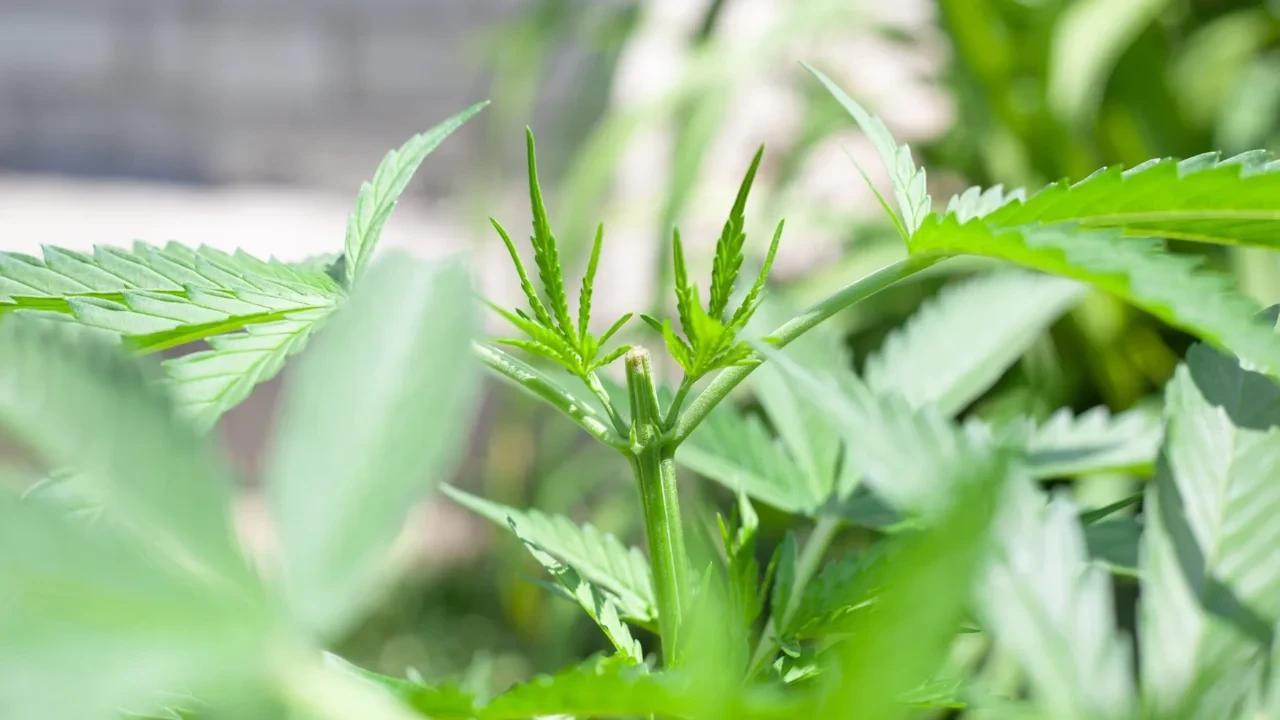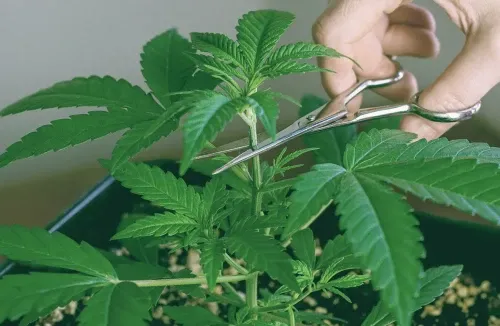Many cannabis growers engage in the practice of topping weed plants in order to maximize their yields. So, you may be asking if the same can be done with autoflowering seeds and whether it will have the same benefits overall. Here is a guide to topping autoflowers and improving your yield.
Can you top Autoflowers?
You can top autoflowering cannabis plants, but make sure you do so before they start developing buds. Your plant should also have about three or four nodes before you consider topping them. Be careful: if you top a plant that is flowering or slow-growing, you may end up stunting the plant’s growth.
Should you top Autoflowers?
Topping your plants will always cause them a certain amount of stress, and there is always a risk of stunting, which can lead to lower yields.
The benefits of topping autoflowers are that it can lead to multiple colas and higher yields, better control over the growth of the plant, and a wider and flatter canopy, which is great for growers working in small spaces.
However, as is often the case with training autoflowering cannabis plants, there is the risk of stunted growth and lower yields, especially for inexperienced growers. This is because autoflowering cannabis strains have a shorter vegetative period (due to their cannabis ruderalis genes), which cannot be manipulated like you can with photoperiod plants. Leaving less room for mistakes with high-stress training methods like this.
When to top Autoflowering Cannabis Plants?

The best time to top an autoflower cannabis plant is in the third week or as soon as they’ve developed three or four nodes.
If you are new to growing cannabis, then we recommend that you gain some experience before you try topping your plants. Once you have successfully completed a couple of harvests with autoflowering strains, you can try topping plants that are robust and healthy.
How to top Autoflowers?
1. Select a plant with three to four nodes
When it comes to topping cannabis plants, you need to consider when the best time is to begin the topping process.
If you top it too soon, you could stunt or slow down its growth. Top it too late, and you may ruin your chance for a good yield.
Auto strains, in particular, are trickier to top compared to the photoperiod cannabis plant. This is because autoflowers have been created with a shorter life cycle in mind. Topping causes a certain amount of stress in the plants, and autoflowers have less time to recover fully.
The best way to find out if an autoflower is ready for topping is to check how many nodes it has. If the autoflower plant has at least three or four nodes, then it will be ready for the topping process.
Make sure the plant itself is healthy: if it shows signs of disease, is over or under-watered, or looks in any way like it's struggling to stay alive, then adding the stress of topping will set you right back.
In addition, do not start topping if buds have started to appear or if the plant is flowering. You will be able to tell if the flowering process has begun if there are small white hairs growing at the joints. At this point, it will be too late to begin the topping process.
Autoflowers tend to have a life cycle of around ten or eleven weeks. In most cases, the best time to start the topping process is around the third week. This will allow you to start just before flowering begins. That said, keep an eye on your plants to see when they develop nodes, as some autoflowers may be quicker or take longer to develop.
2. Top your autoflower
Topping autoflowering cannabis plants is a high-stress training method that involves cutting off the top of the main stem of your plant. The main stem, or cola, tends to absorb most of the sunlight, which is focused on growing the plant. Therefore, the idea behind topping is that it exposes more of the plant to light, causing an increase in growth in the lower branches due to the growth hormones being better distributed. This, in turn, helps your autoflower plant to develop multiple colas rather than just one, each one producing its own yields.
If done correctly, each cola will produce the equivalent that one untouched autoflowering plant would produce, multiplying your overall yield. A good place to top your plant is directly above the leaves of the next node down on the stem.
Another technique similar to topping is called fimming. Fimming involves leaving the main stem largely intact and only cutting off the top leaves.
The origins of this technique are rumored to come from a clumsy grower who, while trying to top his plant, ended up cutting only the top leaves. Seeing their mistake, they exclaimed, “F**k! I Missed!” hence the term FIM.
Yet, as the grower discovered, rather than ruining the yield, the plant ended up producing even more colas and a higher yield than originally anticipated. Fimming is much less stressful than topping and, if done correctly, is less risky when it comes to autoflowers. Nonetheless, we recommend that you only try these techniques when you have gained some experience in growing autoflowers.
In addition to topping and fimming your autoflowers, controlling the shape of your plant so you can direct sunlight to the shoots underneath will further promote growth.
Low-Stress Training (LST) works well with topping to create higher yields. Once you have topped the plant, bend the colas to the side as they grow. This will help the plant grow symmetrically so that light can penetrate the base of the plant. This ensures even the smallest buds will become large and heavy.
The trick is to distribute light evenly to the entire plant. You can use cable ties to bend the colas but be careful not to snap the stem, as this could kill the plant. Mastering the combination of Low-Stress Training with topping autoflowers can definitely help increase yields.
3. Monitor recovery
As mentioned before, you should only top your flowers when the plant is in its vegetative state. Topping is highly stressful for the plant, and it will need enough time to recover before it can continue growing. Keep an eye on your autoflowering plant, and if the topping was successful, you should see new growth appear in two to three days.
One way to tell if the plant is diverting energy to make new colas is by checking the nodes. Each node should become enlarged at the base soon after topping, which shows that energy is being spread around the whole plant and building a stronger system for the delivery of nutrients. This will help in the development of new and bigger colas with increased yields.
Keep in mind that while photoperiods may be topped several times over their lifespan for even more colas, this is far riskier when it comes to autoflowering plants. Autoflowers have a much shorter time to grow and will not allow you much leeway for topping before the flowering phase arrives. As such, we advise against topping your autoflower more than once.
What have we learned?
Topping autoflower plants is a training method that can help you gain a bigger harvest of autoflowering cannabis, but you have to make sure you're timing it right and only apply this technique to healthy plants. This is why we advise topping autoflowers only to an experienced grower with a few successful autos grows under their belt.
If you are up to the task and you now know how to top autoflowers, you can begin trying it out for yourself. We recommend trying the topping process on autoflowering cannabis varieties with a longer growth period and at least 70 days before flowering starts.















